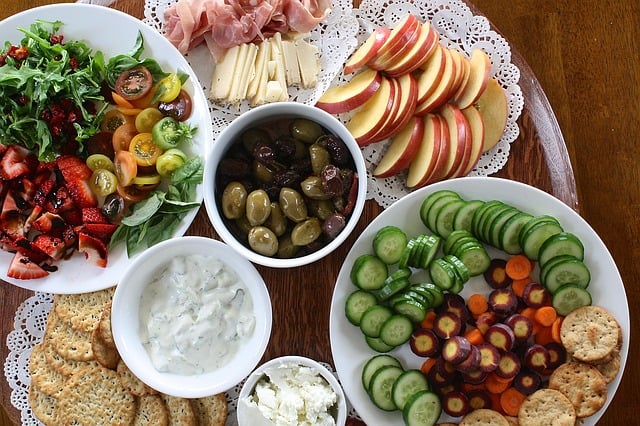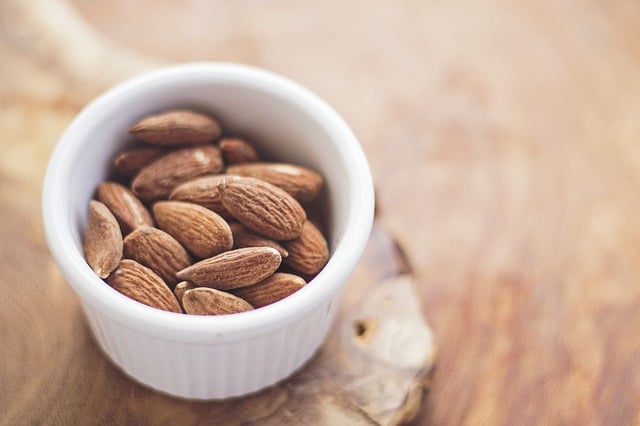When the school year starts and the lazy days of summer give way to hectic mornings and long days, it can be easy for healthy eating to fall by the wayside. But before you toss that bag of chips in your child’s lunch bag, or let them grab a pack of crackers when they get home from school, take a look at these tips from Atrium Health Levine Children’s Charlotte Pediatric Clinic pediatrician Dr.Harshita Reddy.

Better choices mean better days
Eating healthy isn’t just a social media fad. Dr. Reddy says when kids have issues like constipation or even mood swings, bad food choices exacerbate the problem.
But the proliferation of processed, carbohydrate-filled snacks in vending machines and maybe even in your pantry can stand in the way of healthy eating habits for kids.
“Simple carbs are very easy to digest. They don’t fill you up and they get converted to unhealthy fats in the end,” Dr. Reddy says. ‘Proteins fill you up for a longer period of time.”
That’s especially important in the morning when kids often rush out the door without eating breakfast. But if your kids ate dinner at 6 p.m. the night before and don’t eat again until lunchtime, that’s 18 hours with no nutrition. Dr. Reddy says she often sees adolescent patients complain of headaches and lightheadedness, and she reviews their diet to discover they skip breakfast and lunch as well.
“You’re setting yourself up for failure if you’re not giving your body some fuel as you start the day,” Dr. Reddy says.
That’s not to say you have to cook bacon and scrambled eggs for your child every morning. A light but healthy meal like fruit, milk and some protein like make-ahead egg cups should do the trick. And if your kids say they don’t have time for breakfast, have them get up 15 minutes earlier in the morning.

Make a game plan
Healthy eating starts with preparation. Dr. Reddy suggests parents sit down with their kids at the beginning of the school year to make a plan for lunches. This will eliminate on-the-fly food decisions that could lead to unhealthy choices.
If you’re packing lunch for your child, make sure to choose a healthy, balanced lunch with protein, vegetables and fruit whenever possible. Try to avoid processed, packaged snacks in the lunch bag. And don’t worry — they’ll eat if they’re hungry.
“Lots of people worry their kids won’t eat well at lunch so they will let them get away with packing a lot of junk food,” Dr. Reddy says. “Then it changes their tastes and they get pickier as they get older.”
She suggests reusing leftovers creatively by doubling up on dinner portions to save or freeze for reuse later in the week. For example, if you make grilled chicken for dinner one night, pack grilled chicken sandwiches in your kids’ lunch the next day so the meal is slightly different. You could also save leftover veggies from a pasta dish to pack with quinoa and whole-grain bread for lunch the next day.
If your kids eat in the cafeteria, tell them explicitly they should be making healthy choices like eating a vegetable with lunch and foregoing sugary fruit juice in favor of water. Lots of schools make the lunchroom menu available weeks ahead of time; Dr. Reddy suggests going over the menu with your child to decide which choices would be healthy (and which days bringing lunch might be the best option). Then check in with them during the week throughout the year to see what they’re eating each day. Talking about food choices is a great motivator to start kids on a path to healthy eating.
“There’s a conception on the child’s part that lunch is their free meal where no one watches what they eat, but it’s a pretty important meal in the middle of the day,” Dr. Reddy says.
Encourage kids to watch their liquid calories as well. Even though 100 percent fruit juice may sound healthy, it’s still packed with sugar. Water or even plain milk are better options.

Stock your pantry with easy, smart choices
Parents should try to make healthy snacks as easy to grab as something from a package, Dr. Reddy says. She suggests apples and peanut butter, nuts and cheese, or wheat bread with hummus as a few examples.
Dr. Reddy says she hears many parents complain that their children won’t stop eating chips and candy, but it’s usually parents who are responsible for purchasing their kids’ food. The answer to that is simple: stop buying junk and commit to a healthy lifestyle for the whole household.
“You cannot make changes that are specific to the kid. Any habit that isolates the child won’t be sustainable. If there are going to be changes in eating habits, the family needs to do it together,” Dr. Reddy says. “Eat healthily at home together and that will set a good example. Then as your kids get older, (eating healthy) will be second nature.”
The bottom line is to stay involved and keep an open dialog with your kids about eating healthy during the school year (and beyond).
“Your job as a parent is not to help them make the easy choices easier. Your job is to help them think about their choices and help them redirect and realize when they eat (junk) they don’t feel as good as when they eat (healthier),” Dr. Reddy says.

Want to learn more? Check out these additional resources from Atrium Health Levine Children's

Dr. Reddy is a pediatrician at Charlotte Pediatric Clinic in Blakeney. She enjoys guiding families through their children’s formative years. She has two energetic and feisty kids of her own. Her favorite time of day is around 9 PM, when she and her husband reminisce about the hilarious things their children said and did, and also commiserate about parenting.
Connect with Atrium Health Levine Children's


